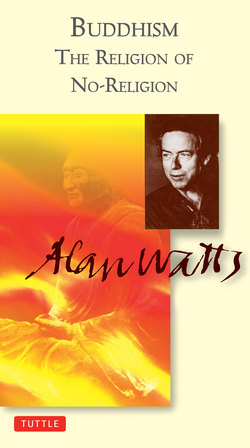Читать книгу Buddhism the Religion of No-Religion - Alan Watts - Страница 8
ОглавлениеINTRODUCTION
The widespread influence of Buddhism is due in part to the skill with which a way of liberation, first taught in ancient India, was refined by its teachers and became accessible to people of diverse cultures. For, as Alan Watts commented during a seminar aboard his ferryboat home in Sausalito, California, in the late sixties:
The Hindus, the Buddhists, and many other ancient peoples do not, as we do, make a division between religion and everything else. Religion is not a department of life; it is something that enters into the whole of it. But when a religion and a culture are inseparable, it is very difficult to export a religion, because it comes into conflict with the established traditions, manners, and customs of other people.
So the question arises, what are the essentials of Hinduism that could be exported? And when you answer that question, you will find Buddhism. As I explained, the essence of Hinduism, the real deep root, is not a kind of doctrine or even a special kind of discipline, although of course disciplines are involved. The center of Hinduism is an experience of liberation called moksha, in which, through the dissipation of the illusion that each man and woman is a separate thing in a world consisting of nothing but a collection of separate things, you discover that you are, in a way, on one level an illusion, but on another level you are what they call the self, the one self, which is all that there is.
Alan Watts’s interest in Eastern thought can be followed back to his childhood, where he was surrounded by Oriental art. His mother was a teacher for the children of missionaries who traveled abroad, and often on their return from China the missionaries would give her gifts of embroideries and landscape paintings in the style of the great classical Asian artists. Years later, while on tour in Japan with a small group of students, Watts recounted the origins of his interest in the arts and philosophies of the Far East:
I had an absolute fascination for Chinese and Japanese secular painting—the landscapes, the treatment of flowers and grasses and bamboo. There was something about that treatment that struck me as astonishing, even though the subject matter was extremely ordinary. Even as a child I had to find out what that strange element in those bamboo and grasses was. I was, of course, being taught by those painters to see grass, but there was something else in their paintings I could never put my finger on. That “something else” was the thing I will call the religion of no-religion. It is the supreme attainment of a buddha: it cannot be detected; it leaves no trace.
As a young man growing up in Kent, England, Alan Watts’s curiosity about the philosophies of Asia led him to explore the bookstores around Cambridge and eventually to the Buddhist Lodge in London. He attended lodge meetings with Christmas Humphreys and soon met the Zen Buddhist scholar D. T. Suzuki. Watts’s formative articles on Buddhism are found in his collected early writings, and they reflect an understanding of Buddhist thought quite advanced for his time. His two subsequent books on Zen Buddhism enjoyed widespread popularity, and by the early sixties Alan Watts was living in California, writing extensively on Eastern thought, and conducting regular speaking tours across the country and in Europe. During this period Alan Watts traveled to Japan twice—once in 1963 and again in 1965. It was on the second Japan tour that he recorded himself in a series of talks that have come to be known as the Japan Seminars. Today these sessions offer one of the most readily comprehensible introductions to Buddhism available in the English language. Watts presents the essential tenets of Buddhism in a concise form, rich with illustrative stories and infused with the spirit in which this great tradition has evolved. The current volume is composed of four sessions from the Japan Seminars—The Journey from India, The Middle Way, Religion of No-Religion, and Buddhism As Dialogue—and two sessions on Tibetan Buddhism recorded four years later in 1969 aboard his ferryboat in Sausalito, California—Wisdom of the Mountains and Transcending Duality. These selections provide an intimate overview of the development of Buddhist thought and offer an introduction to one of the world’s most fascinating ways of liberation.
—Mark Watts
August 1995
